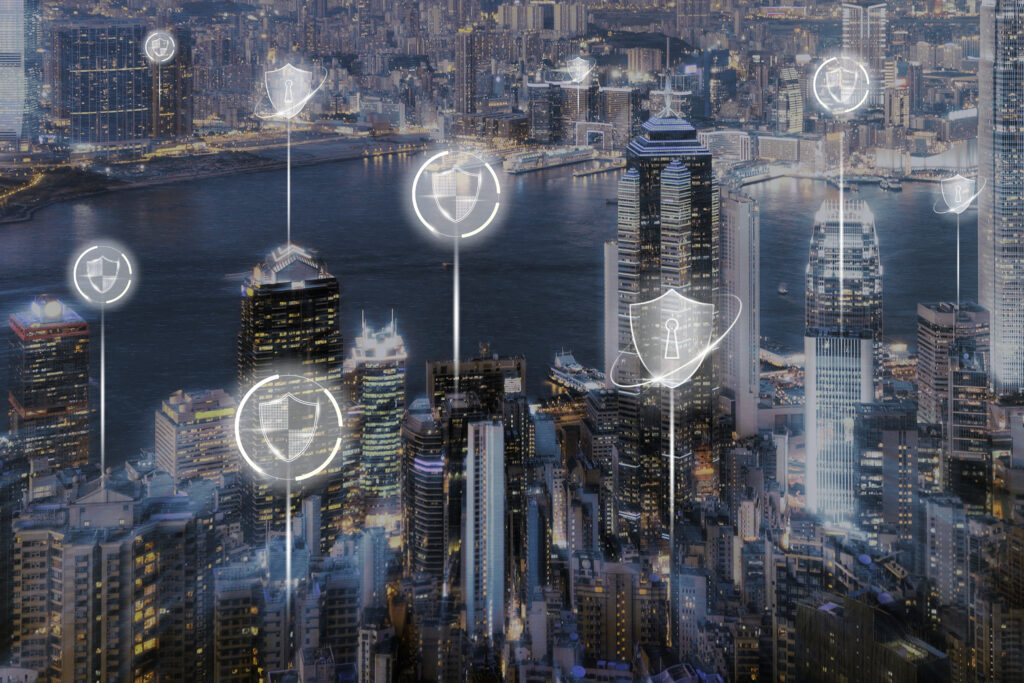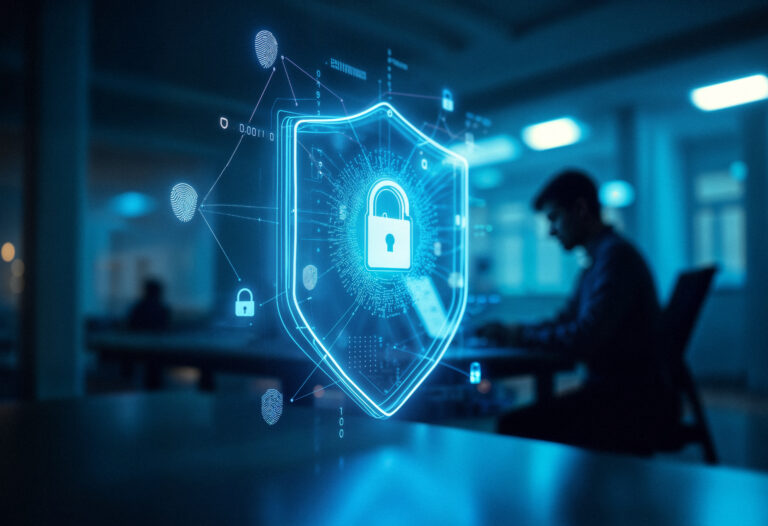Introduction
As digital transformation accelerates, modern enterprises face increasing pressure to secure both their data and infrastructure from evolving cyber threats. A compromised IT infrastructure can disrupt operations, damage reputations, and lead to serious regulatory consequences. That’s why understanding the interplay between cyber security and IT infrastructure protection is no longer optional—it’s critical.
Infrastructure protection goes beyond firewalls and antivirus tools. It encompasses a strategic approach that combines risk management, asset visibility, threat intelligence, and proactive response capabilities. When approached correctly, it empowers organizations to ensure uptime, maintain compliance, and foster customer trust in the face of growing cyber risk.
This guide is crafted specifically for IT leaders, executives, and professionals seeking to deepen their understanding and enhance their organization’s defensive posture. We’ll explore the fundamentals of infrastructure security, the most common threats, and actionable strategies for building resilient systems—while also showcasing the role a trusted MSP service like Infodot can play in simplifying this journey.
What is Infrastructure Security?
Infrastructure security refers to the practice of safeguarding critical IT systems—such as networks, servers, data centers, and cloud resources—from unauthorized access, misuse, or disruption. It encompasses both physical and digital protection layers to ensure system availability, integrity, and confidentiality.
Key Elements:
- Protects physical and cloud infrastructure
- Secures network, storage, and compute layers
- Involves access control and monitoring
- Applies to data centers and cloud platforms
- Supports business continuity strategies
- Includes threat detection and response systems
- Aligned with ISO, NIST, CIS controls
- Forms backbone of digital operations
The Importance of Cyber Security and Infrastructure Protection
Cyber security infrastructure protection is essential to prevent data breaches, ransomware, security in education and downtime. As infrastructures become more distributed—due to cloud and hybrid work—protecting every layer from edge to core is paramount.
Benefits:
- Prevents costly data breaches and downtime
- Reduces risk of ransomware attacks
- Ensures regulatory and industry compliance
- Builds stakeholder and customer trust
- Protects intellectual property and sensitive data
- Enables secure digital transformation
- Enhances visibility across infrastructure
- Supports cyber resilience strategies
Four Levels of Infrastructure Security
IT infrastructure and security should be addressed across four key levels: physical, network, endpoint, and application. Each layer has unique risks and requires specialized protections to form a multi-layered defense strategy known as “defense in depth.”
Levels:
- Physical: Secure hardware and facility access
- Network: Protect traffic and internal communications
- Endpoint: Safeguard user devices and servers
- Application: Defend apps from logic and code exploits
Key Considerations:
- Each level reinforces the other
- Requires continuous patching and updates
- Tools must integrate across layers
- Human error mitigated through policy and training
Common Threats to Cyber and Infrastructure Security
Threat actors target IT infrastructures using various attack vectors. Insiders, misconfigurations, and unsecured APIs also create vulnerabilities.
Common Threats:
- Phishing and credential theft
- Ransomware and extortionware
- Distributed Denial of Service (DDoS) attacks
- Insider threats and human error
- Cloud misconfigurations and API exposures
- Malware injection and keyloggers
- Exploited legacy systems and unpatched software
- Supply chain attacks targeting vendors
Benefits of Cyber and Infrastructure Security
A well-structured cyber security service providers program minimizes risks while boosting organizational efficiency.
Benefits Include:
- Reduced threat exposure and downtime
- Regulatory and legal compliance readiness
- Enhanced business continuity and uptime
- Increased customer and investor confidence
- Faster incident response and recovery
- Scalable for business growth
- Aligned with IT governance goals
- Optimized asset and resource utilization
Best Practices for IT Infrastructure Protection
IT leaders must implement a combination of technical, administrative, and physical controls.
Best Practices:
- Conduct regular vulnerability scans
- Patch systems promptly and consistently
- Deploy firewalls and intrusion detection
- Enforce MFA and zero trust
- Use encryption for data in transit and rest
- Educate users on phishing and hygiene
- Test and validate backups periodically
- Monitor logs and generate alerts
Future Trends in Cybersecurity and IT Infrastructure Protection
As threats grow more complex, the future of infrastructure protection will focus on automation, AI, and zero-trust models.
Emerging Trends:
- AI for real-time threat detection
- Zero-trust network segmentation
- DevSecOps and CI/CD integration
- SASE and cloud-native firewalls
- Blockchain for data integrity
- Security orchestration and automation (SOAR)
- Regulatory tightening (e.g., DPDPA, NIS2)
- Advanced endpoint and EDR evolution
How Infodot Can Build a Resilient IT Infrastructure
Infodot combines deep expertise with robust MSP tools to protect every layer of your IT infrastructure.
Infodot Capabilities:
- 24/7 monitoring and alerting
- Secure endpoint and device provisioning
- Disaster recovery and backup solutions
- Identity and access control implementation
- Compliance-ready audits and reporting
- Patch automation and vulnerability scanning
- Employee awareness programs
- Incident response and root cause analysis
The Role of MSPs in Infrastructure Lifecycle Management
MSPs oversee the entire infrastructure lifecycle—from provisioning to decommissioning.
Lifecycle Management Includes:
- Standardized asset onboarding
- Secure provisioning of infrastructure
- Warranty and lifecycle tracking
- Timely upgrades and patching
- Decommissioning with data sanitization
- Asset documentation and compliance logs
- Integration with CMDB and HRMS
- Centralized control via dashboards
Patch Management as a Security Baseline
Unpatched systems are open doors to attackers. MSPs automate patch deployment to reduce risk.
Patch Management Practices:
- Scheduled patch cycles
- Emergency patch rollout capability
- Compliance with NIST/CIS benchmarks
- Patch impact testing and rollback
- Centralized patch status reports
- Integration with endpoint monitoring
- Vulnerability scoring integration
- Cloud and on-premise compatibility
Remote Infrastructure Protection for Hybrid Workforces
As remote work becomes the norm, MSPs secure access points, cloud services, and devices.
Protection Measures:
- VPN and zero-trust deployment
- Secure access to SaaS apps
- MDM for laptops and phones
- Endpoint detection and response (EDR)
- Cloud configuration hardening
- Remote patch and policy updates
- Geo-IP and access analytics
- Audit trails for remote users
Compliance-Driven Infrastructure Hardening
MSPs help businesses meet standards like ISO 27001, GDPR, and HIPAA.
Compliance Support:
- Risk assessment and gap analysis
- Policy templates and control libraries
- Regular internal audit support
- Role-based access control reviews
- Encryption and data retention rules
- Compliance dashboards and alerts
- Documentation for audit readiness
- Continuous control monitoring
Real-World Examples
Real-World Example 1: Cloud Misconfiguration in E-Commerce
An international e-commerce firm suffered a massive data breach in 2021 due to a misconfigured Amazon S3 bucket. Over 2 million customer records were exposed. The oversight occurred during a cloud migration, where access control wasn’t properly configured.
Outcome:
- Severe backlash and regulatory penalties
- Multimillion-dollar incident
- Brand reputation damaged
Lesson: Configuration management must be enforced during migrations. A proactive MSP could have prevented this.
Real-World Example 2: Ransomware Attack on a Manufacturing Company
A European manufacturing company experienced a full shutdown due to ransomware from a single unpatched endpoint. Systems across departments were encrypted, halting operations for days.
Outcome:
- Supply chain disruptions
- Missed SLAs and customer churn
- Slow recovery due to outdated backups
Lesson: Patch automation and a layered defense are critical. MSPs can implement these proactively.
Conclusion
The digital future demands more than firewalls and antivirus software—it requires a proactive, layered, and intelligent approach to cyber security and IT infrastructure protection.
Whether you’re managing a hybrid workforce or securing cloud-native environments, infrastructure must be hardened and monitored. With the right tools, policies, and partnerships—like those offered by Infodot—organizations can reduce risks and maintain operational resilience.
Infodot empowers businesses to secure what matters most, while allowing them to focus on growth. Security is no longer just IT’s responsibility, it’s a strategic enabler for modern enterprises.
FAQs
What is infrastructure security in cyber security?
It’s the protection of networks, servers, and systems from unauthorized access or damage, ensuring availability and reliability.
What is the difference between IT infrastructure and cyber security?
IT infrastructure involves systems and hardware; cyber security defends those assets from digital threats.
What is CIP in cyber security?
Critical Infrastructure Protection (CIP) focuses on securing vital systems like energy, water, and finance against cyberattacks.
What is infrastructure protection?
It’s a set of strategies to safeguard physical and digital IT assets from threats and vulnerabilities.
What are the pillars of IT infrastructure?
Compute, storage, network, and security form the foundational pillars of modern IT infrastructure.
What skills are necessary for a career in cyber security?
Risk analysis, ethical hacking, incident response, network security, and familiarity with security frameworks are essential.
Why is IT infrastructure security important?
It prevents data loss, ensures uptime, protects users, and maintains compliance with industry regulations.
How can businesses protect their infrastructure?
By using firewalls, patching systems, segmenting networks, and adopting layered security strategies.
Is physical security part of infrastructure protection?
Yes. Protecting server rooms, hardware, and access points is essential to comprehensive security.
What is zero-trust security?
Zero trust means never trusting by default—even inside the network. Every access must be verified.
How does cloud impact infrastructure security?
Cloud introduces new risks like misconfigurations, requiring specialized controls and continuous monitoring.
What’s the role of firewalls in IT security?
They filter traffic, prevent unauthorized access, and act as the first layer of defense.
What is network segmentation?
It divides a network into zones to contain breaches and limit attacker movement.
What’s an example of infrastructure vulnerability?
Using outdated software on core servers creates entry points for attackers.
How does endpoint protection help?
It secures user devices against malware, phishing, and exploits—preventing lateral spread.
Can MSPs help with infrastructure protection?
Yes. They offer monitoring, patching, threat response, and strategic planning for security.
What are security best practices for remote work?
Use VPNs, MFA, device encryption, and endpoint security platforms.
Why are backups essential for IT security?
Backups ensure data recovery after breaches, ransomware, or hardware failure.
What is the CIA triad?
Confidentiality, Integrity, and Availability—core principles of information and infrastructure security.
What is DevSecOps?
It integrates security into software development and operations from the start.
What is SASE?
Secure Access Service Edge combines networking and security functions delivered via the cloud.
What is SIEM?
Security Information and Event Management collects and analyzes logs for threat detection.
How often should infrastructure audits happen?
Quarterly or after major changes to systems, applications, or configurations.
What is incident response planning?
A documented approach for identifying, managing, and recovering from cyber incidents.
What is intrusion detection?
It identifies unauthorized activity or policy violations on a network or system.
What’s the impact of non-compliance in IT security?
Fines, lawsuits, reputational damage, and business loss can result from non-compliance.
What is data encryption used for?
It scrambles data into unreadable code to prevent unauthorized access.
How does AI improve security?
AI helps detect anomalies, predict attacks, and automate responses faster than manual methods.
What is DLP in infrastructure protection?
Data Loss Prevention tools stop sensitive information from leaving the organization.
What is the future of infrastructure security?
AI, automation, zero-trust, and regulatory focus will drive the next era of secure infrastructure.





